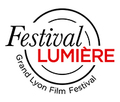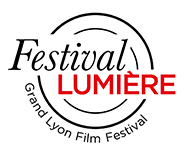The World of Wenders,
from A to Z
PostED on 20.10.2023
D-Day for the Lumière Award ceremony has finally come, so here's a little alphabetic primer to help us delineate this multi-faceted filmmaker of constantly-renewed inspiration.
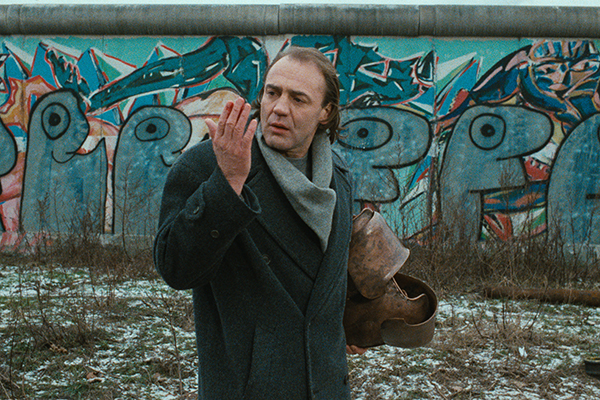 Bruno Ganz in Wings of Desire, 1987 © Wim Wenders Stiftung
Bruno Ganz in Wings of Desire, 1987 © Wim Wenders Stiftung
A IS FOR AMERICA
What does the boomer born in the ruins of a defeated Germany dream of? Certainly not the Federal Republic of Germany, but rather real westerns of the US of A, sans Winnetou, energised by a steady diet of rock’n’roll.
B IS FOR BERLIN
Wenders only moved to Berlin in 1976. It took him a decade to make a film that is now a piece of history; nothing is more beautiful, nothing is more final than the Berlin of Wings of Desire, two years before the fall of the Wall, shown through the sublime images of Henri Alekan. Its rock clubs, its library as the home of the Angels, the Victory Column, and so on. The day Wim sent us that postcard, it hit us right in the heart.
C IS FOR CANVAS
What kind of painter would Wim Wenders have been? Abstract to escape the influence of his masters? Or, conversely, an artist of realism, to follow in the footsteps of those who impressed him, like Edward Hopper? (Hopper, the storyteller of urban America; whose every work seems to be from a movie scene)… See Don't Come Knocking again, the most Hopper-like of Wim’s films.
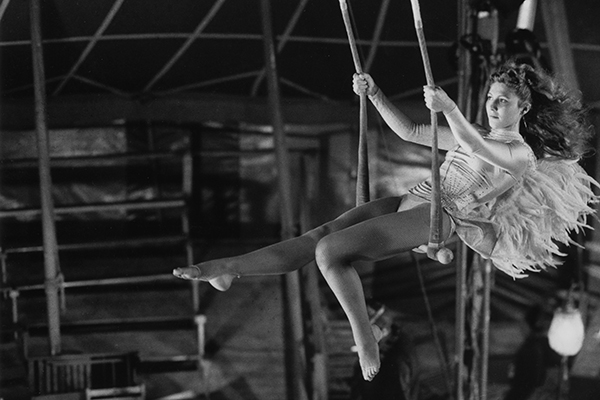 Solveig Dommartin in Wings of Desire, 1987 © Wim Wenders Stiftung
Solveig Dommartin in Wings of Desire, 1987 © Wim Wenders Stiftung
D IS FOR DOMMARTIN, SOLVEIG
Her golden hair, her singular diction in French and German, her lofty silhouette on the trapeze of a Berlin circus or in the near future of a world that fears its doom: Solveig Dommartin (1961-2007) shared Wim Wenders' life and films intimately, co-writing the screenplay for Until the End of the World.
E IS FOR EPIC LANDSCAPES
Of course, Travis from Paris, Texas, walking solo through the vast American desert is a given. But before him, Germany was surveyed from north to south, with the occasional helicopter shot at the beginning of the film to mark the topography (an influence of Fritz Lang, perhaps)? In Wenders’ films, there’s an impression of only existing outside, of being perpetually on the move in the vastness....
F IS FOR FORTUNA DÜSSELDORF
Wim Wenders' favourite football team was created in 1895, like the cinema. It’s usually relegated to Germany's 2nd league (but not badly placed at the time of writing). The club became champions in 1933, though it was not the country's finest hour...
G IS FOR GANZ, BRUNO
Even when playing the moustachioed Jonathan Zimmermann, forced to become an occasional killer in The American Friend, there is a gentleness, a compassion in the face of Bruno Ganz (1941-2019), representing the most profound themes of Wenders' cinema. It is even more the case with Ganz in the role of Damiel, the angel overlooking Berlin in Wings of Desire.
H IS FOR HOME
In Lightning Over Water, Wenders compliments Nicholas Ray on the scene in The Lusty Men, where Mitchum returns home, sweeping away the cobwebs to retrieve a gun and an old illustrated book. And what if the Wenders character's quest was to find a lost or long dreamt-of "home sweet home"?
I IS FOR “IMBISS”
The lesson of Wings of Desire is that the best way to feel alive, even for an ex-angel who looks an awful lot like Columbo, is to hold a cup of hot coffee from a kiosk in your hands in the Berlin winter and enjoy it standing up. Bad coffee, delicious existence.
J IS FOR JARMUSCH, JIM
He’s the American friend, the companion in black & white, the rockabilly of "guerilla shooting" techniques. Awarded the Camera d'Or Prize in Cannes for Stranger Than Paradise the same year Paris, Texas took home the Palme d’Or, Wim still remembers: "That day ended, no doubt about it, with Jim Jarmusch at the Petit Carlton pinball machine. I can see us now: Wim and Jim – it was pure euphoria!”
K IS FOR KREUZER, LISA
With her cleft chin and dark circles around her eyes, she was Wenders' very first female lead, whether she was playing a bad mother (Alice in the Cities) or an attentive wife (The American Friend). Sweet, but also powerful, darkly beautiful yet angelic, she is simply irresistible.
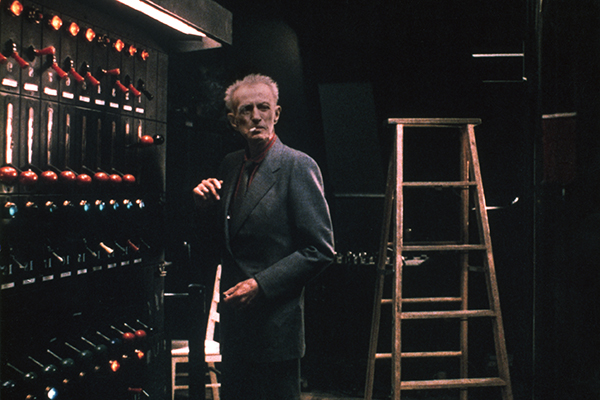 Lightning Over Water, 1980 © Wim Wenders Stiftung
Lightning Over Water, 1980 © Wim Wenders Stiftung
L IS FOR LANGLOIS, HENRI
After failing the School of Fine Arts, young Wenders got practice at the Cinémathèque Française, where he listened to the master of the house present hundreds of films. Later, after Langlois had introduced The Goalie’s Anxiety at the Penalty Kick, Wenders noted with astonishment that the former was leaving the room. "You're not staying?” "No, I'm going to dinner; I don't watch films, I show them...". Not one to hold a grudge, Wenders nevertheless dedicated The American Friend to Langlois, whose 1977 death is seen covered on the front page of La Libération.
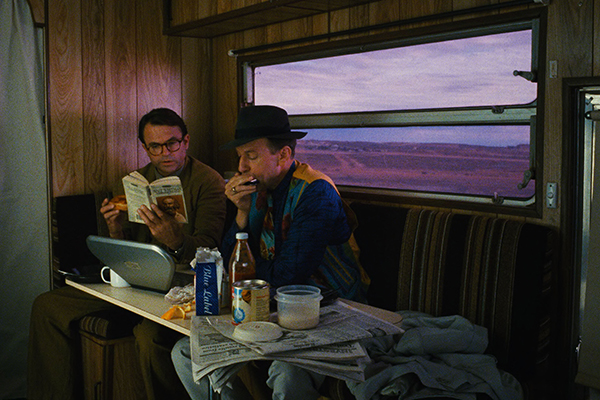 Robbie Müller in Until the End of the World - Director's cut, 1991-1994 © Wim Wenders Stiftung
Robbie Müller in Until the End of the World - Director's cut, 1991-1994 © Wim Wenders Stiftung
M IS FOR MÜLLER, ROBBIE
An eminent Dutch cinematographer (1940-2018), he collaborated with Wim Wenders on eleven films. In the era of Paris, Texas, Müller became the darling of international auteur cinema working with the likes of Jim Jarmusch and Lars Von Trier.
N IS FOR NICK’S MOVIE
Nick’s Movie, the French title of Lightning Over Water, is a heart-wrenching portrait of Nicholas Ray at the end of his life. When he was in better health, the director also appeared in The American Friend, in the company of Samuel Fuller, Jean Eustache and Daniel Schmid. In various films, one hears about the deaths of John Ford (Alice in the Cities) or Federico Fellini (Lisbon Story). And Wenders signed on to co-direct Beyond the Clouds for the ailing Michelangelo Antonioni. A true friend to auteurs.
O IS FOR OZU, YASUJIRO
"If there were such a thing as a sacred treasure of cinema, then for me it would have to be the work of Ozu. As Japanese as he is, his films are universal at the same time. In them, I could recognise all the families of all the countries in the world, as well as my parents, my brother and myself.” - Excerpt from Tokyo-Ga, Wenders' documentary on Ozu.
P IS FOR PARIS
Paris, Texas, naturally, but also Paris, France, where his vocation took shape and the Paris Bar in Berlin, the trendy “place to be” before the fall of the Berlin Wall.
Q IS FOR QUATRE-VINGT QUATRE: 84
Isabelle Huppert, the youngest member of the jury that year, remembers the Palme d'Or being awarded unanimously, under the elegant chairmanship of Dirk Bogarde. It was a pivotal year for Wenders, who went from being an auteur appreciated by the critical intelligentsia to becoming a young master with a nearly universal audience (2 million tickets sold in French cinemas).
R IS FOR ROCK
"The music is never a mood or an illustration, but the story of the film. It's as important as the characters' journey.”
S IS FOR SONGE (DREAM)
"As a child, my map of the world was my most precious possession. In magazines, I would cut out photos of faraway cities and skyscrapers and think that there were places elsewhere that had not been destroyed.”
T IS FOR TRAINS
Anyone who loves to travel has to love trains. As early as Kings of the Road, the two main characters keep passing different Deutsche Bahn trains, in a strange ballet of road vs. rail that must not have been so easy to film. Later, there's a great” neo-Hitchcock” style murder scene in The American Friend.
U IS FOR U2
Wenders directed several of their videos, while Bono penned many of the songs used in the films and provided the subject matter (and OST) for The Million Dollar Hotel. Mutual esteem, friendship, synergy.
V IS FOR VOGLER, RÜDIGER
Although most of the time, he identifies as Winter, Philip Winter; he is in turn a writer, projector repairman, sound engineer, detective... Playing all these selves, Rüdiger Vogler, three years Wim Wenders' senior, offers a wry smile, a look of kindness and compassion, on others. The first angel of Wenders' cinema.
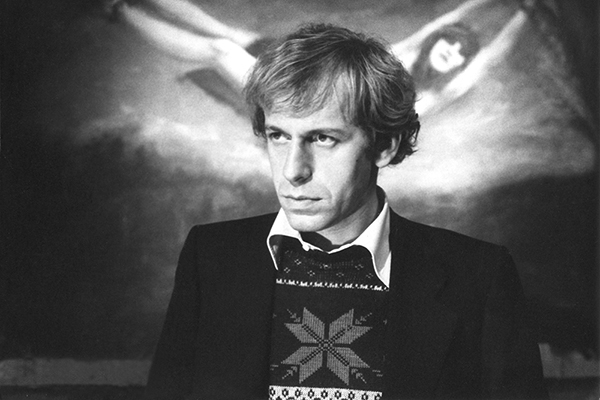 Rüdiger Vogler in Wrong Move, 1975 © Wim Wenders Stiftung
Rüdiger Vogler in Wrong Move, 1975 © Wim Wenders Stiftung
W IS FOR WENDERS, DONATA
Frau Wenders is an artist in her own right, a talented photographer who has covered her husband's shoots since The End of Violence and is also developing a body of work of her own, holding an increasing number of solo exhibitions, with a very definite taste for black and white.
X IS FOR “X”, THE CROSSING SIGN
"I've always seen my films as a search for something that might happen, something that you find along the way, either through the actors or the landscape. If I turn right, it will be one film. If I turn left, it will be another film.”
Y IS FOR YAMAMOTO, YOHJI
One day, Wim Wenders took off his braces and became the flawlessly elegant king of fashion, expressing his admiration for the Japanese designer of streamlined, loose-fitting clothes, to whom he dedicated the documentary Notebook on Cities & Clothes.
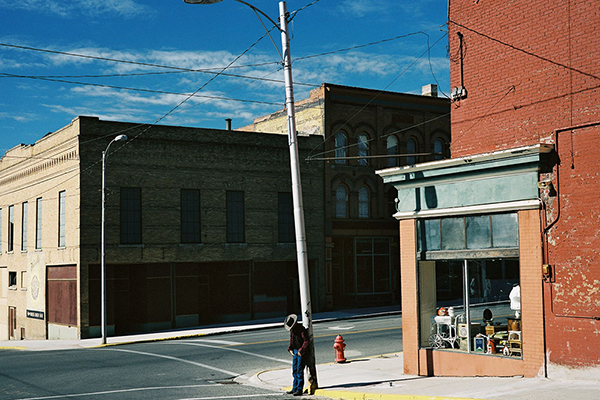 Don't Come Knocking, 2005 © Wim Wenders Stiftung
Don't Come Knocking, 2005 © Wim Wenders Stiftung
Z IS FOR ZISCHLER, HANNS
Hanns is the actor with the "American" physique that Wenders was able to find in Germany. Born in 1947, he was an early collaborator, starting with Summer in the City, Wim’s graduation film. He is also a theatre director and essayist - he held a book signing for his fascinating book, Kafka va au cinema, at the Lumière film festival.
Aurélien Ferenczi
